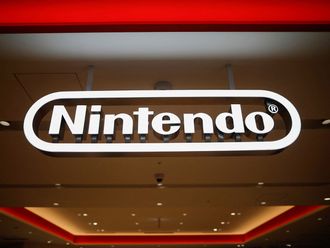
Smartphones have outsold feature phones for the first time and are on their way to becoming smarter and cheaper, according to technology researchers.
"Smartphones are becoming smarter, and will be smarter than you by 2017," Carolina Milanesi, Research Vice-President at information technology (IT) research company Gartner, says in a media statement.
"If there is heavy traffic, it will wake you up early for a meeting with your boss, or simply send an apology if it is a meeting with your colleague. The smartphone will gather contextual information from its calendar, its sensors, the user’s location and personal data," she adds. The company says smartphones will soon be able to predict consumers’ moves, purchases or actions based on data accumulated using cognizant computing, defined as the next step in personal-cloud computing.
Quick uptake
"Mobile phones have turned into smartphones thanks to two things — technology and apps," says Milanesi. "Technology has added features, while apps have connected these to functions that, for the most part, add and improve our day-to-day life." What smartphones can do through apps has improved and broadened thanks to the personal cloud. "We assume apps will acquire knowledge over time and get better with improved predictions of what users need and want, with data collection and response happening in real-time," she adds.
There will be more than 5.6 billion active smartphones in the world by 2019, according to the latest edition of the Ericsson Mobility Report. "The rapid pace of smartphone uptake has been phenomenal and is set to continue. It took more than five years to reach the first billion smartphone subscriptions, but it will take less than two to hit the two-billion mark," says Douglas Gilstrap, Senior Vice-President and Head of Strategy at Ericsson.
"Between now and 2019, smartphone subscriptions will triple. Interestingly, this trend will be driven by uptake in China and other emerging markets, as lower-priced smartphone models become available," he adds.
The Ericsson report, quoted by AFP, highlights how quickly smartphone adoption has changed the way consumers use mobile devices. In 2009, at around 150 petabytes (PB) (1 petabyte = 1,048,576 gigabytes) a month, the majority of traffic on mobile networks was voice calls. Three years later, voice calls still account for 150PB of traffic a month, but come a distant second to video and web-browsing data, which averages 1,800PB a month and is expected to grow by a further 45 per cent every year to ten times the current amounts by 2019.
Pricey strategy
The link between data usage and low-priced smartphones was also discernible in recent quarterly shipment reports by IDC and Gartner.
Gartner researchers said in their global outlook for PC, tablet and mobile shipments that while the mobile phone market would continue to grow steadily, the opportunity for high-priced smartphones is now ending. "The market is being driven by a shift to lower-priced devices in nearly all device categories," researchers said.
According to IT market-research company IDC, smartphone average-selling prices are declining. Of the major mobile operating systems (OS) being measured today, only BlackBerry, the company with the grimmest sales outlook, registered a higher average price.
"Android and Windows Phone continued to make significant strides in the third quarter. Despite their differences in market share, they both have one important factor behind their success: price. Both have a selection of devices available at prices low enough to be affordable to the mass market, and it is the mass market that is driving the entire market forward," says Ramon Llamas, Research Manager with IDC’s mobile phone team.
Android to dominate
More than 80 per cent of all smartphones shipped worldwide run on Android systems, according to IDC’s new Worldwide Quarterly Mobile Phone Tracker. Of the many manufacturers running Android, Samsung gained the most market share. It accounted for 39 per cent of all Android smartphone shipments in the third quarter. The majority of the other vendors saw market share within single digits or less.
During the quarter Windows Phone shipments jumped 156 per cent year-on-year, although the Windows Phone market share is still less than 5 per cent.
Android will remain the leading device OS, as it is on pace to account for 38 per cent of shipments this year, Gartner says. The Windows OS is projected to decline by 4.3 per cent in 2013, as a result of the decline in traditional PC sales, but will return to growth in 2014 with device OS shipments increasing by 9.7 per cent.
Gartner expects shipments to touch 1.81 billion units this year, against the 1.74 billion units last year, with growth expected to come from mid-tier smartphones in mature markets and low-end Android smartphones in emerging markets.
Worldwide mobile phone sales to end users totalled 455.6 million units in the third quarter this year, an increase of 5.7 per cent on the same period last year, according to Gartner. Sales of smartphones accounted for 55 per cent of overall mobile phone sales or 250.2 million units in the tracking period, their highest share to date. Asia Pacific led the growth in both markets — the smartphone segment with 77.3 per cent increase, and the mobile phone segment with 11.9 per cent growth. Other regions to show an increase in the overall mobile phone market were Western Europe, which returned to growth for the first time this year, and the Americas.
"Sales of feature phones continued to decline and the decrease was more pronounced in markets where the average selling price (ASP) for feature phones was much closer to the ASP of affordable smartphones," says Anshul Gupta, Principal Research Analyst at Gartner. "In markets such as China and Latin America, demand for feature phones fell significantly as users rushed to replace their old models with smartphones."
Market leaders
While Samsung’s share in the global smartphone market was flat at 32 per cent in the third quarter this year, it increased its lead over Apple, which fell two percentage points to 12 per cent on the same period last year. The launch of the Samsung Note 3 reaffirmed it as the leader in the large-display smartphone market, which it has pioneered.
Apple’s smartphone sales reached 30.3 million units in the third quarter, up 23.2 per cent from a year ago. "While the arrival of the iPhones 5S and 5C had a positive impact on overall sales, such impact could have been greater had they not started shipping late in the quarter. While we saw some inventory built up for the iPhone 5C, there was good demand for iPhone 5S, with stock out in many markets," says Gupta.
Lenovo’s smartphone sales grew to 12.9 million units, up 84.5 per cent year-on-year. It constantly increased share in the Chinese smartphone market. Nokia did better than expected in the third quarter, reaching 63 million phones, thanks to sales of Lumia and Asha series devices.











